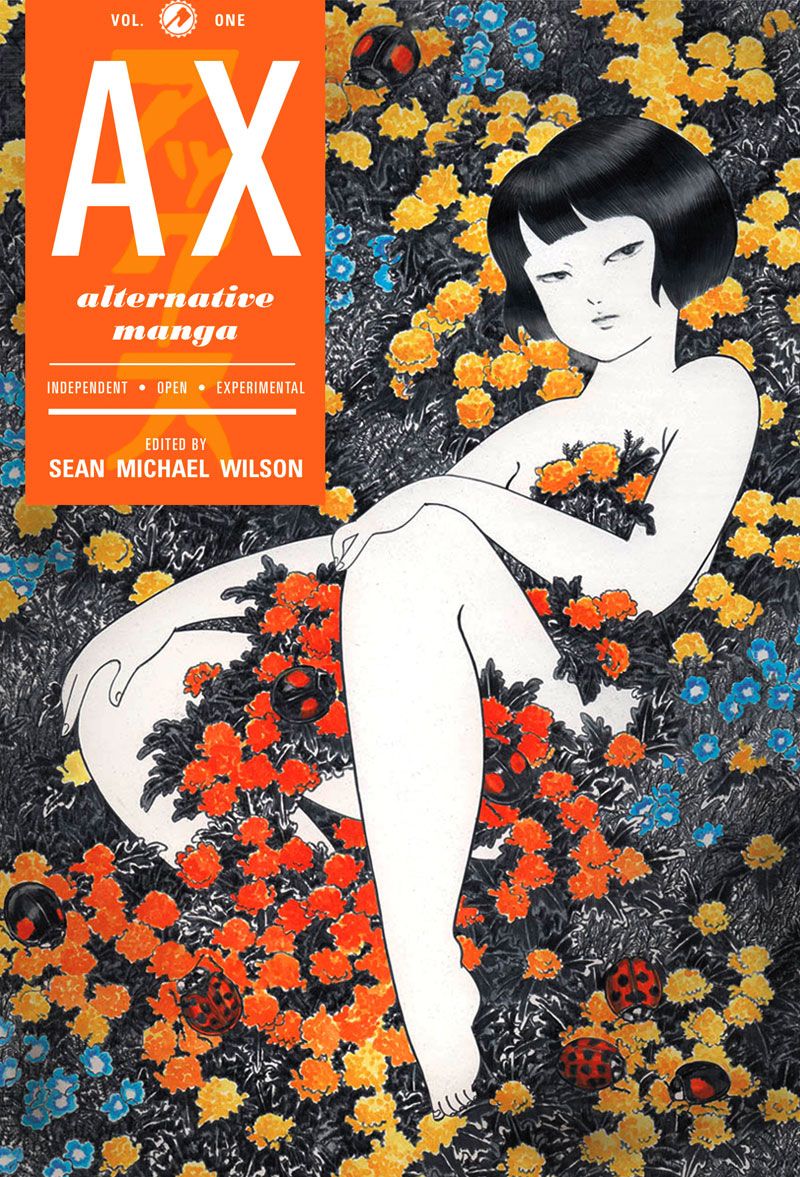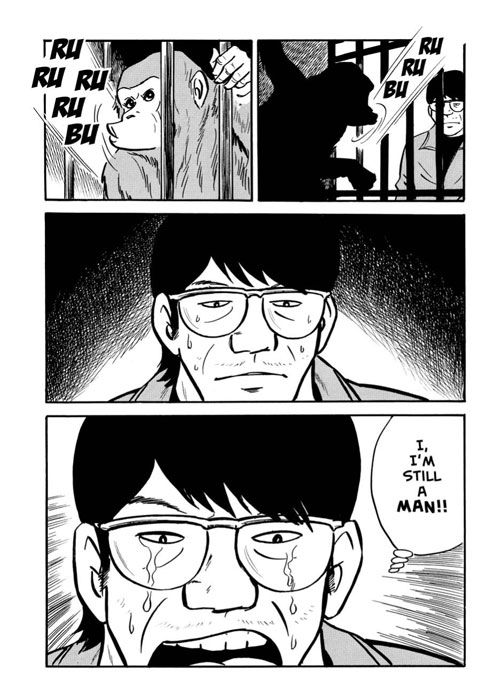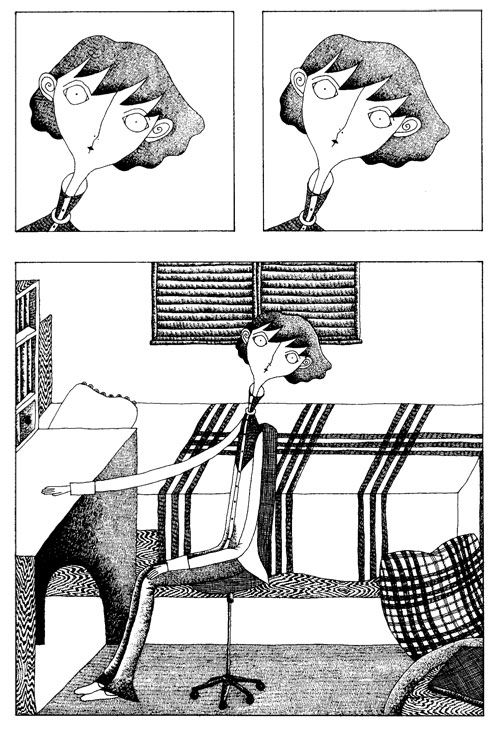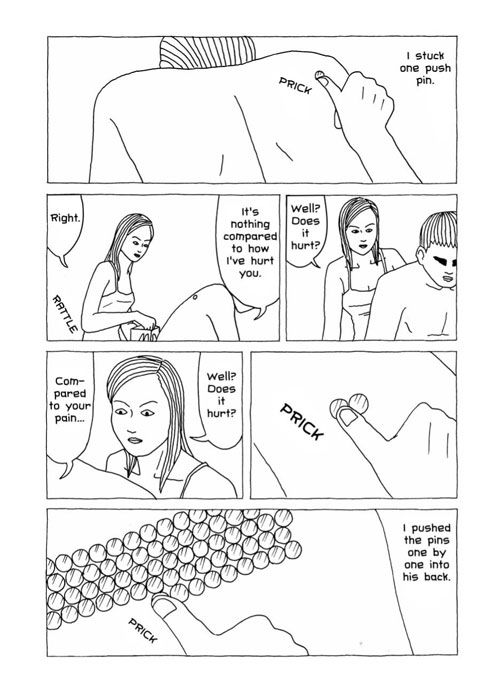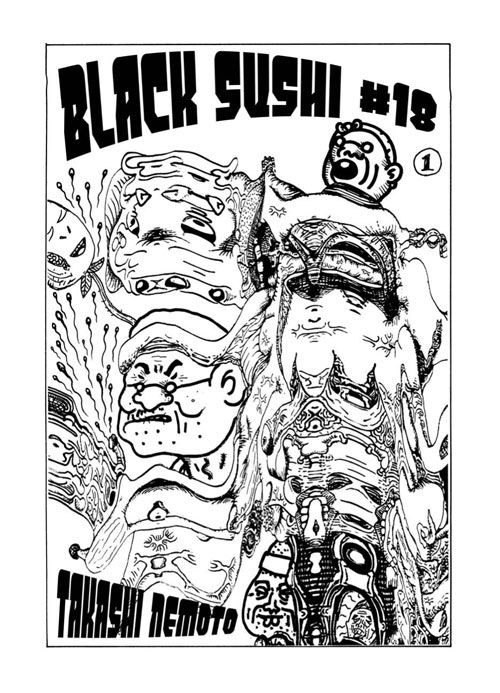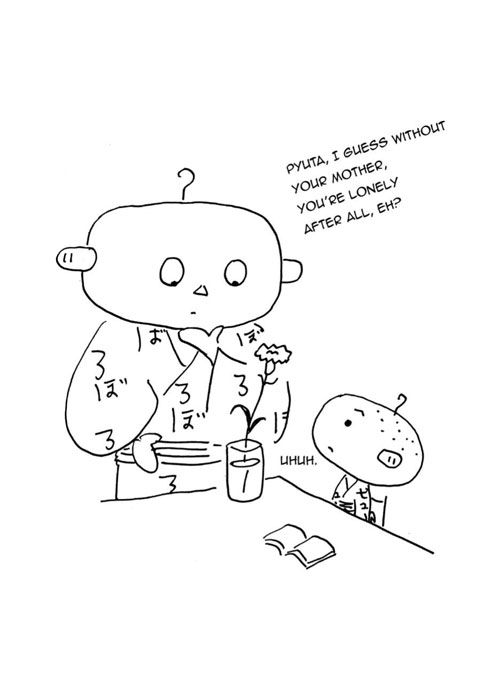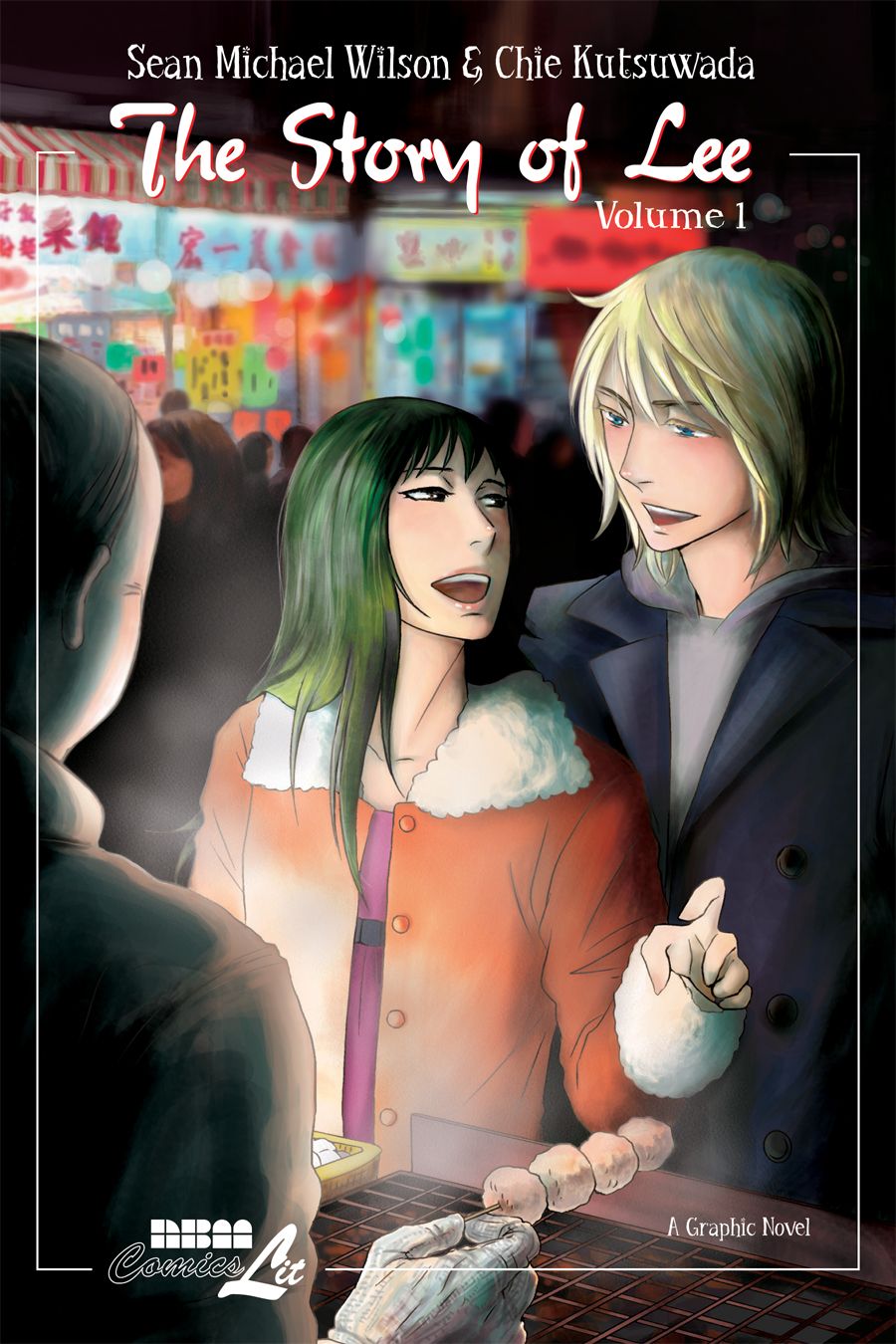One of the more anticipated books of 2010, at least among manga and alt-comix fans, is Ax: A Collection of Alternative Manga. The anthology, which collects stories taken from the first ten years of the experimental magazine's history, has garnered interest and curiosity since it was first announced more than a year ago. That interest has only increased after its debut at this year's San Diego Con, where many pundits dubbed it one of the best books at the show. If nothing else, the collection should finally put to rest the notion that Japanese comics are all about big eyes and spiky hair and giant robots. There is a wealth of different art styles and methods of storytelling on display in this book, suggesting that the history of manga is richer and deeper than many suspect.
I recently talked over email with the book's editor, Sean Michael Wilson, about the new collection, Ax's history and influence in its native country of Japan, and what other comics he's got coming down the pike.
First of all, for the sake of readers who aren't familiar with Ax, can you provide a brief history of the magazine, and its significance/importance in the manga industry?
AX and the publisher Serin-Kogeisha developed out of GARO, as most of the staff at AX once worked at Garo. When Garo changed hands in the 90's, and started to take on a more mainstream character, some fans and staff disliked the change. Its a bit contentious as to what happened, but the end result was that the people who later formed Ax were no longer associated with Garo by Summer 1997. Rather than getting mired in negative feelings they decided to do something positive to make their mark and continue to make more alternative style manga.
So, within 6 months they had started AX - which first came out in February 1998. Its named after a Bob Marley song, Small Axe , about cutting down the big Jamaican record companies. Ax is an alternative to the big Japanese manga companies, so the simile is poetic and fitting. The moto of Ax is: "Manga should be independent, Manga should be open, Manga should be experimental."
How were you introduced to Ax, and what specifically was it about the anthology that not only drew you to it, but made you want to try and introduce it to a Western audience?
I met with Mitsuhiro Asakawa, in the Seirin-kogeisha office in Tokyo, just out of interest, as I was going round the Tokyo publishers, to introduce myself and find out what kind of work they wanted. It was an interesting first meeting as that same day I met with Kodansha, who has this massive rocket type building about 24 floors high or something. You need to sign into security to get entrance, etc. Then later that afternoon I had to hunt round the back streets of Shinjuku to find the little one floor office of Seirin-Kogeisha, hidden behind some little shops. Quite a contrast! But soon Asakawa and I got on well, and established a rapport. Partly because of a shared love of the Beatles and other 60s rock music! I don't quite remember how it happened but somehow we decided to make a joint effort to get more of this alternative style manga from Ax out in English. I have always liked the more mature, indie style comic books, since reading ESCAPE magazine in the UK when I was a teenager. So, I immediately respected the ethos of AX. Now, two years later, the book is out - and has been very well received. Many people in the recent San Diego festival told me that it was one of the 'must-buy's of the convention, and showed a lot of enthusiasm to see such alternative style manga finally come out. It's been tipped to be an Eisner award nominee for next year. Both myself and Asakawa feel very glad about this.
How popular or well regarded is Ax in the larger manga industry? How influential has the anthology been, if at all?
Even in Japan Ax is a minority affair, sales wise anyway. Serin-Kogeisha is the only alternative manga publisher in Japan, in the view of Asakawa-san. The most successful Serin-kogeisha book is Doing Time by Kazuichi Hanawa which sold around 100,000 copies in Japan. This is available in English from Fanfare/Ponent Mon, who do a very good range of mature style manga (I am involved in one of their books too, The Times of Botchan).
But Ax itself only sells about 5,000 copies per issue, which comes out every two months, 300 plus pages each time. That would be pretty good sales figures for a US indie anthology, but it's much smaller than the sales figures for mainstream anthologies in Japan. However, as with many of these things,the sales figures don't reflect the extent of the respect or the influence. Especially in bringing back older mature style manga into focus again, such as Tatsumi (the most well known example in English now), Seirin-Kogeisha are doing very important work. For instance, a new book they brought out recently that I was given a copy of is Flight by Kuniko Tsurita, a collection of stories from the 1960s. With a bit of luck, and good sales figures for the English editions, we can bring out a whole range of such books. Which will be something of great value.
The stories in the Ax collection include a wide range of artistic styles and subject matters. Is there such a thing as a "typical Ax story?" If so, what is it?
I am not sure if we can say there is a typical style, other than "the artist does what ever they want." The typical range of aspects include erotic, heta-uma (bad-good), nichi-jo monogatari (everyday stories), dream stories, surreal, off kilter humor, and the just plain odd.
Can you talk a little bit about how you selected stories for this collection? Did you draw upon the anthology's entire history or just select material from recent years? Was there any overriding philosophy that guided you when you were choosing what to include?
It was a mix of a 'best of' the first ten years of Japanese Ax, with an attempt to be representative of the range of styles. The only aspect that limited that was our decision to show mostly self contained stories in this first collection. Ax has various ongoing stories also though. The overiding philosophy was to reflect the wonderful moto of Ax in general: "manga should be independent, open and experimental." And what a moto that is!
I'm assuming that in most cases you had to get the individual artists' approval to have their work included in this anthology. What was their reaction when you initially contacted them? Were they supportive of the project or were they reluctant to have their work translated into English (I suppose here I'm primarily thinking of artists like Yohsiharu Tsuge, who still refuses to have his work translated).
All of the artists seemed delighted, and as they all were in the Japanese Ax, and in contact with Asakawa, it was not such a huge job to contact them. Tsuge is not a typical case for Japanese manga-ka. He perhaps has his own special reasons for refusing translation, and we must respect that.
Though many of the artists in the anthology will no doubt be new to even experienced manga readers, there are a few who have been published here before, most notably folks like Tatsumi and Hanawa? Was it important to you to bring that blend of familiar and unknown creators to the collection, and if so, why?
There was no question of that really. The stories were picked because of quality. Most of the artists except Tatsumi are unknown in the US. Of course Hanawa, Hanakuma and Nemoto have been translated already but still I guess that the vast majority of manga fans have not read them yet. In the first gekiga/ax talk I did, in NYCC in 2008, I ask for a show of hands, and only about 10% of the audience then had read Tatsumi or heard of gekiga or AX. Now its gone up, but even so in the recent San Diego talk I did less than a third of the people were familiar with this type of manga already. So, really, the stuff in AX is very new for most comic book and manga fans.
I'm sure it's hard to pick and choose, but if there were one or two (or three) authors represented here who you'd like to see more of their work published in the U.S., who would they be and why?
My favourites, are Tatsumi, Abe, Kondo, and Hanawa. Tatsumi and Hanawa are out in English already of course. So it would be nice for Abe and Kondo to be published more, because of the subtle everyday tales, which is one of the key types I like - we could call them "nichijo" stories in Japanese. Also Yamamoto and Miyanishi because of the beauty of the artwork and poeticism of the words. This, with the heta-uma, erotic, and fantasy styles in the book shows the large range of comics on show in Ax.
Do you have any plans for a sequel? Would you like this to become a continual thing, where you're able to release a new Ax collection on these shores every year to 2 years?
We do plan to make it a new volume every year, if the gods are willing! It depends first on sales figures, public and critical reaction, and how buy myself and Asakawa are. Please keep supporting Ax, so that we can have a whole range of such volumes in English. There are 18,000 pages of it yet to come!
In an interview in Publisher's Weekly you talked about several other manga-related projects you're currently working on. Can you just briefly describe what they are and when U.S. readers will likely be able to see them?
The next one up is Hagakure, from Kodansha International, which will be out in Sept in Japan, January in the rest of the world. Its a closely authentic manga version of the classic book about Samurai code of behaviour. Then my next adaptation with UK publisher is coming out Sept/October: The Canterville Ghost, from the Oscar Wilde story. They do beautiful colour books that deserve a lot more attention.
Then The Story of Lee is out from NBM in Dec I think. That is my own original story, set in Hong Kong, and I researched it there a lot, so we have many real HK places in it. Its kind of a romance and a cultural/gender/age clash story. I would be too bored to write a straight love story!
Then the second Kodansha International book will be out in January in Japan, Yakuza Moon. That is a very tough story of gangsters, drugs, abuse and crazy sex - but told in an intimate way, from the woman's point of view. It also happens to be a true story.
Along with Ax, thats quite a range of books. I always stress that I am NOT a "manga expert," its only really this gekiga/mature manga style that I know about well. But Publishers Weekly called me a "Comics Renaissance man", which I like a lot!


